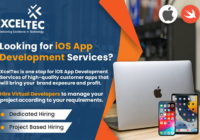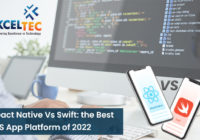
What’s the History of AR & VR Technology?
What Is the History of Augmented Reality & Virtual Reality?
The first VR head-mounted display was built in the late 1960s, and it has been around for decades. VR technology was mostly employed in flight simulation, military training, and medical applications until the 1990s when Nintendo’s Virtual Boy and Sega’s VR-1 pioneered the use of VR gear in gaming. These early VR experiences were constrained by the technology of the time and did not take off, and the industry remained relatively quiet for the majority of the 2000s. Consumer VR hardware has only recently become more affordable, most notably with PSVR, Oculus, and Vive.
AR, like VR, began in the late 1960s, but it wasn’t until the 1990s that the phrase “augmented reality” was established. AR was mostly utilised for simulation and training, as well as in the manufacturing business, similar to VR. Advertising and marketing firms discovered the value of AR campaigns in the late 2000s. Wearable AR technology, such as Google Glass and Microsoft HoloLens, has achieved breakthroughs similar to VR hardware, however, it has yet to gain general consumer adoption.
What Technologies Are Being Used by Developers to Create AR & VR Products?
The following technologies are commonly utilised to create AR and VR applications:
Unreal Engine uses C++ and Unity3D uses C#.
Depending on the target device and application’s purpose, there are numerous SDKs (software development kits) available. Following are some examples:
- ARCore (AR)
- ARKit (AR)
- Vuforia (AR)
- SDK for Oculus (VR)
- OpenVR (VR)
- Google Virtual Reality SDK (VR)
What Is the Demand for AR & VR Engineers?
The AR and VR markets are expected to grow dramatically over the next 10 years, according to Statista.com. As AR and VR hardware becomes more accessible and prevalent, more sectors will embrace ways to use it, similar to how industries targeted mobile phones as they got more prevalent. Because practically every smartphone is AR-capable right now, the potential audience for AR apps and goods is tremendous, and just as there was a boom for mobile app creators, there will be a boom for AR and VR developers as well.
What Skills Are Required for Novices to Begin Learning AR & VR?
What Are the Prospects for AR & VR?
As the hardware that supports AR and VR becomes more widely available, more industries and businesses will want to capitalise on this new technology. I anticipate the industry will advance in leaps and bounds over its previous development. I believe that AR will be used to make our lives more informed, connected, and convenient, and that well-designed AR experiences will soon become the norm for anything from museum visits to sporting events to daily commutes, and everything in between.
Final Thought
Get in touch with us for more!
Contact us on:- +91 987 979 9459 | +1 919 400 9200
Email us at:- sales@xceltec.com







